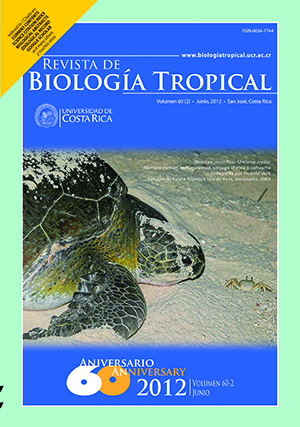Resumen
Con el fin de evaluar el efecto de la Subducción de la Dorsal Asísmica de Cocos (DAC) durante las etapas finales de la formación del Istmo. Realizamos muestreos con bultos en afloramientos fosilíferos en las penínsulas de Burica y Nicoya. Las condiciones paleoecológicas y paleoambientales fueron reconstruidas a partir de la comparación entre la estructura de las comunidades fósiles, con las comunidades modernas dragadas de los mares de Panamá, usando análisis de componentes principales. Los resultados indican que antes del cierre del Istmo, existieron islas oceánicas y un afloramiento moderado en Burica. Posterior al cierre, el choque de la DAC provocó la elevación del fondo marino y las aguas que se encontraban a 2 300m pasaron a 40m. El afloramiento se intensificaba en mar abierto pero la dorsal había formado islas en Burica que limitaban el efecto del afloramiento en la costa. La subducción de la DAC continuó y las islas se unieron gradualmente a tierra firme y desaparecieron, permitiendo el afloramiento. Durante el Pleistoceno medio un segundo proceso de levantamiento acelerado continuó elevando el fondo marino y formó la Cordillera de Talamanca. La cordillera creó una barrera que bloqueó el paso de los vientos Alisios y originó condiciones ecológicas y optimas que permiten el crecimiento de los mejores arrecifes de coral costeros del Pacífico oriental tropical (POT) entre Panamá y Costa Rica.##plugins.facebook.comentarios##

Esta obra está bajo una licencia internacional Creative Commons Atribución 4.0.
Derechos de autor 2012 Revista de Biología Tropical
Descargas
Los datos de descargas todavía no están disponibles.


